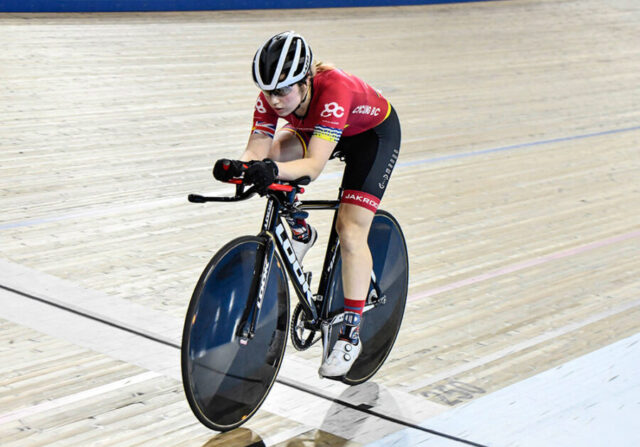One of Cycling BC’s primary roles as a provincial affiliate of Cycling Canada, which is affiliated with the UCI (Union Cycliste Internationale), is to support safe, fair, and fun cycling experiences by ensuring that cycling competitions at the provincial level adhere to the regulations set by Cycling Canada and the UCI. Cycling Canada issues a companion guide each year that is ancillary to the UCI rules. We have linked to both resources below.
The Cycling Canada companion guide and UCI rules apply to AA-level sanctioned events (e.g. Provincial Championships, BC Cup) and AAA-level sanctioned events (e.g. National Championships, Canada Cup). Events sanctioned at other levels (e.g. A-level, Grassroots, Mass Participation) often use the companion guide and UCI rules as guidelines but may operate under more flexibility or modified formats to foster participation and learning.
Please note that both the Cycling Canada companion guide and the UCI rules are dynamic reference sources and could be updated at any time during the season.
The information under the tabbed sections below summarizes the most relevant rules to our membership and how they will be enforced.
1.2.080 Fairness – All licence holders shall, in whatever capacity, participate in cycling races in a sporting and fair manner. They shall look to contribute fairly to the sporting success of the race.
1.2.081 Sportingness—Riders shall defend their chances sportingly. Any collusion or behaviour likely to falsify or go against the interests of the competition shall be forbidden.
1.2.082 Caution – Riders shall act with utmost caution. They shall be held responsible for any accidents that they cause. In how they behave in the race, they shall observe the legislation of the country where the race occurs.
1.1.008 Licenses—The licence is valid for one year, from 1 January to 31 December, in all countries where there is a UCI member national federation.
1.3.047 Affiliated Clothing – Riders for the club shall wear uniform clothing complying exactly with that described in the notification referred to in article 1.3.046. Unless specifically provided for, no rider shall be permitted to ride in the colours of any association or company other than those of the club given on their licence.
- Following a non-enforcement period, Cycling BC will enforce UCI rule 1.3.047 as of January 1st, 2025. Therefore, members participating in sanctioned competitions must wear team clothing that matches the club/team/business listed on their license. Independent riders must wear unmarked clothing.
- Athletes who compete for organizations outside British Columbia must contact membership@cyclingbc.net and provide proof of their club/team/business’s good standing with the national governing body and a letter for team staff confirming the roster.
- Non-affiliated organizations cannot be listed on start lists, race results, or be acknowledged at event awards. Racers are not permitted to compete in the branded clothing of non-affiliated organizations.
1.1.048-50 Race Officials – Commissaires, individually and/or in a panel, shall direct the sporting aspects of cycling events and ensure that the event is conducted according to the regulations. They shall, in particular, ensure that the rules specific to a race, how it is conducted, and all technical provisions relating thereto comply strictly with the applicable provisions of the regulations. Commissaires shall record breaches of the rules and pronounce the foreseen penalties, … and (1.1.049) shall apply and/or confirm the penalties imposed. (1.1.050) Each commissaire shall act neutrally and independently. They may in no way be involved in the organization of the race. They shall immediately decline their appointment if they know of any aspect that could doubt their neutrality.
1.2.129 Rule Enforcement – Moreover, each of the commissaires shall be individually entitled to take the following measures:
- to refuse to allow riders to start who do not comply with the regulations or who are manifestly not in any condition to participate in the race;
- to give warnings and to inflict an admonition;
- to immediately remove from the competition a rider who commits a serious fault, who is manifestly not in any condition to continue the competition, who has dropped so far behind as not to be able to catch up again or who constitutes a danger to other persons
1.3.006 Video Cameras on Bike and Body – Onboard video recording devices (cameras) are permitted in road, cyclocross, and velodrome events provided they are “affixed [to the bike] in a manner that ensures it is not susceptible of inadvertently dismounting or is non-removable.” However, video recording devices are not permitted in any cycling discipline when attached to the helmet or body (i.e., chest mount) (view MTN BIKE tab for additional information). VIEW IMAGE
1.1.033 New Canadians – All licence-holders shall be assigned the sporting nationality corresponding to their nationality, regardless of the national federation that issues the licence. The sporting nationality shall be assigned upon issuance of the first licence. A rider holding multiple nationalities must choose between them when first applying for a licence. A stateless licence holder shall be assigned the sporting nationality of the country where they have resided for at least five years. For any cycling event where a rider represents their national team, they may only be selected by the federation of their sporting nationality. A rider shall be subject to the regulations and disciplinary procedures of the national federation of their nationality in all matters concerning their selection for the national team. According to this article, a rider recognized as a refugee in their country of residence (by the relevant state authorities or the UNHCR) may choose between the sporting nationality corresponding to their nationality or be classified as a “refugee” for sporting nationality. In such a case, the rider shall be entitled to compete in events with the participation of national teams when provided for under the UCI Regulations (e.g., participation rules and/or qualification systems).
1.2.028 N) Provincial Championships – This competition is open to Canadian citizens, permanent residents, landed immigrants, and individuals with refugee status in all categories, including UCI. Proof of citizenship status (passport, permanent resident card, landed immigrant status, or refugee status papers) may be required.
- Only Canadian citizens eligible to race with Canadian as their UCI nationality will have access to the Canadian Champion title, podium, medal, and UCI points.
- Prize money (where applicable) will be based on the order of finish at the National Championships, regardless of citizenship or nationality.
- Should a non-citizen (permanent resident, landed immigrant or individual with refugee status) place amongst the top three overall finishers in the race category, a podium presentation will take place based on the order of finish of the race and a second podium. A presentation based on the National Championships results of eligible Canadian citizens will follow.
- The Provincial Championships are the responsibility of the organizing province. Provinces must organize their championships according to the distances and regulations adopted for the National Championships.
1.2.028 P) Provincial Championships – Proof of BC residence and a Cycling BC membership are required to earn a Provincial Championship Jersey. Should a non-Cycling BC member place amongst the top three overall finishers in a Provincial Championship race category, a podium presentation will take place based on the order of finish of the race and a second podium presentation based on the Provincial Championships results of eligible Cycling BC member will follow. BC Provincial Champion jersey must be worn on the race run and podium.
Last edited September 10th, 2024



